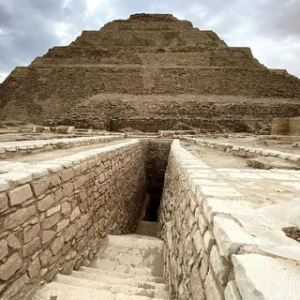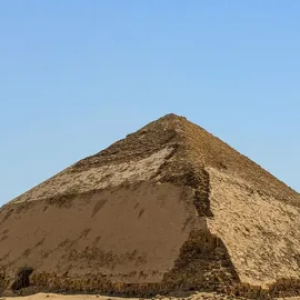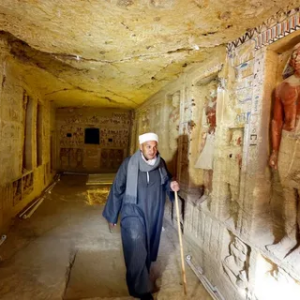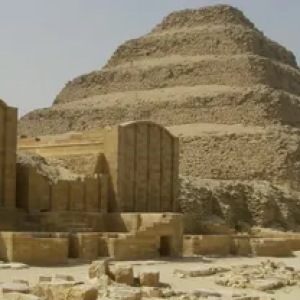
I. Introduction
II. History
III. Significance in Ancient Egypt
IV. The Structures and Monuments
V. Excavations and Discoveries
VI. Saqqara Today
VII. Future of Saqqara
VIII. Conclusion

Egypt is a country steeped in history and culture, with a multitude of iconic landmarks that attract millions of visitors every year. One such landmark is the ancient necropolis, located just outside modern-day Cairo. This site is home to some of the most significant archaeological finds in all of Egypt, and it has played an essential role in shaping our understanding of ancient Egyptian culture and society. In this article, we will delve into the history and importance of as well as explore the unique structures and monuments that make it such an incredible place to visit.

It has a long and storied history that spans over 5,000 years. The site was initially used as a burial ground during the Early Dynastic Period (c. 3150 – 2613 BCE), but it wasn’t until the Old Kingdom (c. 2613 – 2181 BCE) that it became a prominent site for burials. During this period, the Pharaohs of the Old Kingdom built massive tombs and monuments at Saqqara, including the famous Step Pyramid of Djoser, which was the first pyramid ever built in Egypt.

After the decline of the Old Kingdom, it continued to be used as a burial ground throughout the Middle Kingdom (c. 2055 – 1650 BCE) and the New Kingdom (c. 1550 – 1070 BCE). Many of the Pharaohs of these periods built tombs and monuments at Saqqara, including the Pharaoh Tutankhamun, whose tomb was discovered in the nearby Valley of the Kings.
It was more than just a burial ground for the Pharaohs of Ancient Egypt. It was also a religious and cultural center where the ancient Egyptians believed their gods lived and interacted with the living world. Many of the structures and monuments were built as temples and shrines to honor the gods and goddesses of the ancient Egyptian pantheon. The most famous of these temples is the Serapeum, a massive underground complex where the Apes Bull, sacred animals believed to be the incarnation of the god Ptah, were buried.

In addition to its religious significance, it was also an important center for learning and scholarship in Ancient Egypt. The site was home to the world’s first known university, the House of Life, where scribes and scholars were trained in the arts of reading, writing, and mathematics. The House of Life was also responsible for creating and preserving many of the ancient Egyptian texts that have survived to this day.

Saqqara is home to some of the most impressive and iconic structures and monuments in all of Egypt. The most famous of these is the Step Pyramid of Djoser, which was built by the architect Imhotep during the Third Dynasty (c. 2670 – 2613 BCE). The Step Pyramid is considered to be one of the most significant architectural achievements of Ancient Egypt and is a testament to the advanced engineering skills of the ancient Egyptians.

In addition to the Step Pyramid, Saqqara is home to many other impressive structures and monuments, including the Pyramid of Teti, the Pyramid of Unas, and the Serapeum of Saqqara. The Pyramid of Teti is the second pyramid built at Saqqara and is the first pyramid to have inscriptions from the Pyramid Texts, a collection of religious texts used in the Old Kingdom period.

The Pyramid of Unas, which is smaller than the Step Pyramid but has a more refined design, is known for its beautiful pyramid texts that cover its interior walls. The Serapeum of Saqqara, located in a subterranean complex, was a burial place for the APIs bulls, which were considered to be the incarnation of the god Ptah.

Apart from these pyramids and the Serapeum, Saqqara is also home to several mastabas, which are flat-topped rectangular structures with sloping sides that were used as tombs during the Early Dynastic and Old Kingdom periods. These mastabas were owned by high-ranking officials and members of the royal family and are known for their intricate decoration and fine craftsmanship.

Overall, Saqqara is an important site in Egypt and provides valuable insights into the culture, religion, and architecture of Ancient Egypt. Its pyramids, mastabas, and other structures are a testament to the wealth and power of the pharaohs and their ability to construct grand monuments that have stood the test of time.